
Perhaps the main problem that plagues the schools of Karachi, as well as those in the rest of the province, is the limited progress that students show during their formative years.
Grade 1 students of the country’s largest city show remarkable prowess in mathematics and languages but fast forward to grade 10 and the students perform worse than those of any other major city. It is therefore clear that learning outputs in the city are by far worse than that of any other, with teachers receiving the chunk of the blame for failing to impart knowledge to the students.

Teachers need training
To improve matters, it is vital that the teachers are trained and the fact is not lost on education minister Nisar Khuhro. “We are trying to improve the output of teachers and we have been working hard to train them,” he said. “We have trained almost 35,000 teachers in collaboration with the Canadian International Development Agency since 2006, and we are aiming to train another 5,000 this year. As many as 40,000 headmasters across the province will also be trained under this project.”


Khuhro was also quick to accept that the education system, in the city, in the province and in the entire country, needs a lot of work and he felt that focus on school development projects is required to improve the situation. “A significant amount has been kept aside for development projects,” he claimed. “Out of that amount, 40 per cent will be for new projects and 60 per cent is for ongoing ones.”
The system is in shambles, however, and there is just as much need to invest in the short-term as there is in the long-term. Realising this, the provincial government has decided that funds will be released to projects depending on estimated time till completion. “The projects that can be finished soon will get money first so that there are immediate improvements,” revealed Khuhro.
A lack of teachers or the increased number of students cannot be blamed either, as the ratio of teachers to students in the city’s primary schools stands at 20:1, nearly half that of the national average of 37:1 and the ratio is dwarfed by those of Lahore and Peshawer; 43:1 and 47:1 respectively.
Eyebrows are often raised at the amount of money being spent on the salaries of teachers - 75 per cent of the total Rs134.3 billion education budget - and the lack of output of government teachers, who out-earn private school teachers, has done little to silence the critics.

System? What system?
Khuhro may be satisfied with the state of teacher training but others are not. “How is training 40,000 teachers in eight years a satisfactory number?” asked Idara-e-Taleem-o-Aagahi programmes director and one of the brains behind the Annual Status of Education Report, Baela Raza Jamil. “And what good does training those teachers do when there is no long-term vision and so much institutional disconnect, especially since the Sindh Teachers Education Development Authority (Steda) is still not functional?”

Steda, she went on to reveal, was supposed to be the umbrella body to monitor all teacher training programmes in the province and was to accredit all private and government training programmes. However, the body that was built in accordance with the Steda Act, 2012, has yet to be made functional and its Rs100 million annual budget goes unspent, added Jamil.

There is also a Provincial Education Assessment Centre to monitor the progress of students, but just like Steda, it is an organisation only on paper.
Lack of facilities and infrastructure
However, fingers should not be pointed only at the teachers as other factors hinder education output. Many of the schools in the province are without basic facilities and even Karachi is not an exception. As many as 30 per cent of the city’s public schools do not have electricity, 43 per cent do not have water and 10 per cent do not have a boundary wall. For comparison, only three per cent of schools in Lahore do not have electricity, a negligible number do not have water and a mere two per cent do not have a boundary wall. “We will be focusing on repairs and maintenance of schools,” promises Khuhro, saying the right things as always, but nothing palpable has been done so far on this front.
A change in curriculum
In an attempt to improve output, the curriculum for primary schools has been changed and teachers are now being given refresher courses, claimed Khuhro. However, gauging the benefits of such a change is difficult as any improvement due to the curriculum is dependent on the teachers.

Published in The Express Tribune, July 29th, 2014.
COMMENTS (7)
Comments are moderated and generally will be posted if they are on-topic and not abusive.
For more information, please see our Comments FAQ

















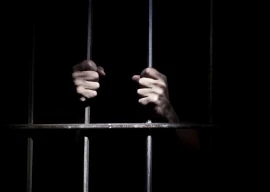
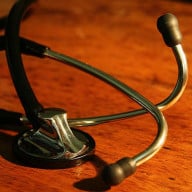











1714129906-0/Clint-Eastwood-(1)1714129906-0-270x192.webp)
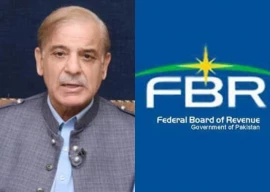

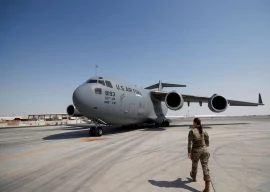

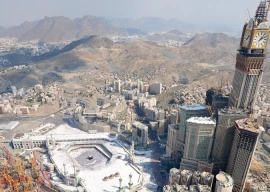






The politicians have destroyed every institution in Pakistan for their own short-sighted benefits.
Just to name a few are PIA, the police, government owned industries like the Steel Mill. Our politicians are incapable of creating new avenues for development and growth. They just parasitise existing ones to extinction. Both MQM and PPP are leading destroyers of education in Sindh.
Thank you PPP for continuing to destroy the future of Khi and the rest of Sindh
Thanks to MQM
Another problem which is responsible for lowering the quality of education is that this 'culture' of private tuitions and coaching centers has to end - it promotes otherwise capable teachers (especially those in govt schools) to not put in effort in schools so they can source students for tuition. The result is that only those who can afford private tuition do well, while those who can't (including the poor who are most deserving of a good education at govt schools) are left out.
I think this also explains the decline in standard beyond primary level - I don't know a single school-going relative here in Karachi who doesn't take tuitions after grade 6.
There were days when Karachi was considered a better educated population. Now, with the political influence on examinations by MQM has brought down the standards to the lowest. All this was not the total fault of MQM. Its workers kept pressuring the leaders to let them cheat because thats what happens in the res of Sindh and if they don't cheat they will be left behind. A lame excuse but it happened and look at our situation now.
It looks like this report only analyzes the traditional school infrastructure, which is no doubt has appalling standards. However the research ignores the big underbelly of the city's 'educational' industry - namely the madrassas. Thousands of students study arcane, outdated and misanthropic ideas - taught by equally dubious and poorly trained teachers. After ten years of mind-numbing training - these poor students are ill-equipped with skills or training to participate in the economy. The administration needs to look into what goes on in madrassas - either restructure, normalize and modernise them or disband them for good and redirect the funding towards better schools for everyone.
Although I am not from Sindh but I must say that everything in Sindh is going downhill. Who is to be blamed for this ? MQM ? PPP ?